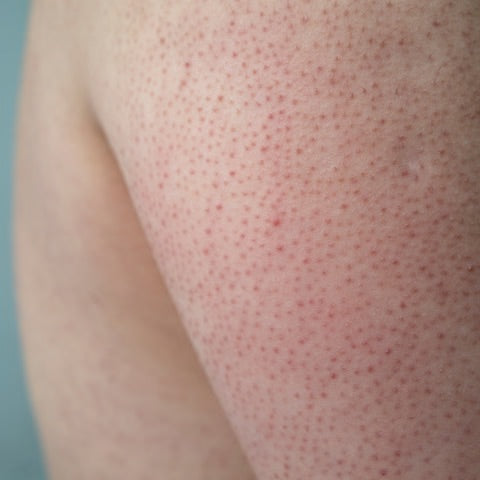Understanding Keratosis Pilaris: Causes, Symptoms, and Effective Treatments
Keratosis Pilaris, often referred to as "chicken skin," is a common skin condition that affects millions worldwide. Though harmless, it can be a source of discomfort and self-consciousness for many. In this post, we'll delve into what Keratosis Pilaris is, its causes, symptoms, and the most effective treatments available.
What is Keratosis Pilaris?
Keratosis Pilaris is a skin condition characterized by the appearance of small, rough bumps on the skin. These bumps are usually found on the upper arms, thighs, cheeks, or buttocks. They are caused by the buildup of keratin, a protein that protects the skin from harmful substances and infection.
Causes and Risk Factors
The exact cause of Keratosis Pilaris is unknown, but it's believed to be linked to genetics and skin type. It's more common in people with dry skin or those suffering from eczema. Other risk factors include age (it's more common in children and adolescents) and family history.
Symptoms
The most noticeable symptom of Keratosis Pilaris is the appearance of small, painless bumps on the skin. These bumps can be red, white, skin-toned, or darker than the surrounding skin. The affected area may feel rough or sandpaper-like. In some cases, the bumps can become itchy or inflamed, especially during winter months or in dry climates.
Effective Treatments
While there is no cure for Keratosis Pilaris, several treatments can help manage the symptoms and improve the appearance of the skin:
-
Moisturizing: Keeping the skin well-moisturized is crucial. Use thick, cream-based moisturizers or emollients that contain ingredients like urea or lactic acid, which can help soften and exfoliate the skin.
-
Exfoliation: Gently exfoliating the affected area can help remove dead skin cells and reduce the buildup of keratin. Use a soft exfoliating brush or a scrub with mild abrasives. Avoid harsh scrubbing, as it can irritate the skin and worsen the condition.
-
Topical Retinoids: These vitamin A derivatives can help promote cell turnover and reduce the appearance of bumps. However, they can be irritating to the skin, so it's best to start with a low concentration and use them under the guidance of a dermatologist.
-
Topical Steroids: For cases with significant redness or inflammation, a dermatologist may prescribe topical corticosteroids to reduce the symptoms.
-
Laser Therapy: In more severe cases, laser therapy can be used to reduce the redness and inflammation associated with Keratosis Pilaris.
Lifestyle Tips
In addition to the treatments mentioned above, the following lifestyle tips can help manage Keratosis Pilaris:
- Avoid long, hot showers or baths, as they can dry out the skin.
- Use a humidifier in dry environments to keep the air (and your skin) moist.
- Avoid tight clothing that can irritate the skin.
- Protect your skin from the sun by using sunscreen, as sunburn can worsen the condition.
Conclusion
Keratosis Pilaris is a common skin condition that, while not harmful, can be a cosmetic concern for many. By understanding its causes and symptoms and following an effective treatment plan, you can manage the condition and achieve smoother, clearer skin. If you're concerned about your skin, consult a dermatologist for personalized advice and treatment options.

